- Established 1982 -HOME: www.hiltonpond.org
THIS WEEK at HILTON POND Subscribe for free to our award-winning nature newsletter (Back to Preceding Week; on to Next Week) |
AN UNEXPECTED FUNGUS AND Although we have limited training in mycology—the study of fungi—we're always on the lookout for mushrooms and their kin as we walk our trails at Hilton Pond Center. This week we came across an unfamiliar fungus in an unexpected place: Growing on a 12" dead twig (below) that fell from high atop a Shagbark Hickory tree behind our old farmhouse. We recognized the foliose form of some gray-green lichens, but the pale shell-like fungal structures were a bit of a mystery.
All text, maps, charts & photos © Hilton Pond Center At first we thought the pinkish-lavenderish growth was some kind of bracket fungus with a concave cap, and with that perspective we took several photos like the one below. Turns out we were looking at it upside down, and the unusual feathery radiating lines were actually gills on the cap's UNDERside.
All text, maps, charts & photos © Hilton Pond Center Flipping the twig over, we realized the top of the cap (below) was white and fuzzy. The inch-wide cap had no stipe (stem) and was produced by a hidden mycelium, an asexual root-like structure that is the real business end of the fungus; its role is to extend within the twig, secreting enzymes that break down complex woody cellulose into simpler organic compounds. These the fungus uses to grow and to produce the cap--the visible reproductive stage. The latter, in turn, yields spores that--after landing on the proper substrate--germinate under optimal (but poorly understood) conditions to produce a new "wood-eating" mycelium.
All text, maps, charts & photos © Hilton Pond Center We got help on identifying our find from a Facebook group called "Mushrooms and Fungi of the Eastern United States," whose members agreed it was Schizophyllum commune, aka Splitgill Mushroom It is so-named because of the unusual way the gills under the cap split longitudinally as they dry out and sporulate, as shown in the mature specimen below. (Photo taken ten days after those above and after the cap had been moistened by rainfall.) The species is found worldwide (except Antarctica) and often grows in dense colonies rather than solo or in small clusters like those we found.
All text, maps, charts & photos © Hilton Pond Center Our Facebook friends also cautioned us about breathing in the spores of Splitgill Mushroom. Although this particular fungus is edible, its spores apparently can germinate in one's respiratory tract--rarely growing into mushrooms in the sinus cavities of immunocompromised individuals. WHERE DID THE SIKINS GO? If it seems nearly everything we've written bird-wise this winter has been about Pine Siskins (PISI, male, below), it's because we've had a record-breaking year for them. The first siskin of 2020 arrived and got banded at Hilton Pond Center on 17 October--two weeks before our previous early date--and was followed by 327 more through the end of the 2020 calendar year. Things certainly picked up again after New Year's Day, so by 21 March we'd handled a whopping 879 more, bringing the winter total to 1,107. (Our previous record was 780 PISI for the full winter of 2014-15.) The odd thing was those first birds from October didn’t seem to hang around long. In fact, our banded siskins essentially disappeared in November--replaced starting in December by new unbanded ones, but leaving us to question where the earlier birds had gone. We got an answer to that query this week (at least for two of them) in a "Report To Bander" from the federal Bird Banding Lab (BBL) in Laurel MD.
All text, maps, charts & photos © Hilton Pond Center This coordinated banding system works because a bird bander, after capturing a bird and applying a band to its leg, submits relevant data to the BBL in special format, including--at the minimum--the bird's species, its age and sex, and date and place of banding. These data are then loaded into the BBL master database. If someone finds a banded bird--perhaps because it hit a picture window or, heaven forbid, Fluffy brings it in as a prize--the finder can go on-line at ReportBand and submit the band number, date and location of the encounter, and the bird's condition. (Fellow banders at some other study site can report equivalent data and release a banded bird after recapture.) Typically, the finder gets immediate on-line feedback about when and where the found bird was banded; the bander eventually gets a more detailed report about the "foreign encounter." This week, we happened to get info about TWO of our siskins banded in the past few months at Hilton Pond Center. All text, maps, charts & photos © Hilton Pond Center (Click on image above for a larger version in a new browser window) The first Pine Siskin (#1590-96728) actually was banded quite recently on 7 February 2021. At capture, we determined it was an older, after-second-year individual that must have hatched in 2019 or before. Alas, the "Report to Bander" (see above) indicated on 5 March it hit a stationary object at the home of Jamie Queen in York SC, just two straight-line air miles northeast of Hilton Pond. (Ironically, the encounter location was barely 0.4 miles from "The Styx," a country home we Hiltons built and lived in in the 1970s before going to Minnesota for grad school. That's also where we all got started in birding.) This short-distance York encounter was interesting and probably demonstrates that some Pine Siskins roam around a little after coming south for the winter, perhaps sampling fare at different bird feeders in a relatively small area. (Who knows what stimulated it to leave the budget-busting cornucopia of seed we offer at Hilton Pond Center!?) The second bird, however, provided information of even greater significance.
All text, maps, charts & photos © Hilton Pond Center In this case, another Pine Siskin (#2870-24890) was banded as a hatch-year bird at Hilton Pond on 26 October 2020, just before it and most of its conspecifics mostly disappeared from the Center. So where did this siskin go? Why, southwest to Dallas, Georgia (west of Atlanta; see map above). There, it was found dead of unknown causes on 2 March by Amy Kobylarz--214 straight-line miles from the banding site!
All text, maps, charts & photos © Hilton Pond Center It's hard to explain the behavior of our second Pine Siskin reported by Amy. This is a bird that breeds in the coniferous forest of Canada (map above), the very northern U.S., and in western states, and rarely migrates far in winter--almost always in irruption years when seed crops fail up north. In the case of this second siskin, it came south to Hilton Pond, got banded in October, and kept going WEST--nearly to the edge of its typical southernmost limit in Georgia--only to be found four months later. Had it survived, it's hard to predict which route this siskin would have followed when it headed back north to its breeding grounds this spring. The Georgia incident is only our sixth Pine Siskin long-distance encounter (outside York County SC)--out of 4,510 siskins banded through 21 March 2021 at the Center; all the others occurred long ago, from 1985 to 1992. Of these, two were found dead in Pittsfield, Massachusetts (650 miles northeast) and Apsley, Ontario (700 miles north); one was stunned and released at Schomberg, Ontario (640 miles north); and two banded a year apart were recaptured an hour apart and released by bird bander Dennis Meyer at Duluth, Minnesota (990 miles northwest). We're hopeful with nearly 1,300 siskins banded this winter at Hilton Pond at least a few more will show up as foreign encounters at far-flung locales. (NOTE: Special thanks to Jamie Queen and Amy Kobylarz for reporting their recent encounters with Pine Siskins banded at Hilton Pond Center. Without cooperation from folks like them we would miss lots of important data about bird migration.) All text, maps, charts & photos © Hilton Pond Center HILTON POND SUNSETS "Never trust a person too lazy to get up for sunrise
All text, maps, charts & photos © Hilton Pond Center Sunset over Hilton Pond (above), 11 March 2021 Photoshop image post-processing uses DeNoise AI, Sharpen AI , and other Topaz Lab tools
Checks also can be sent to Hilton Pond Center at: All contributions are tax-deductible on your Don't forget to scroll down for Nature Notes & Photos, |
|---|
|
"This Week at Hilton Pond" is written and photographed by Dr. Bill Hilton Jr., executive director of Hilton Pond Center for Piedmont Natural History
|
|
|
Please refer "This Week at Hilton Pond" to others by clicking on this button: |
|

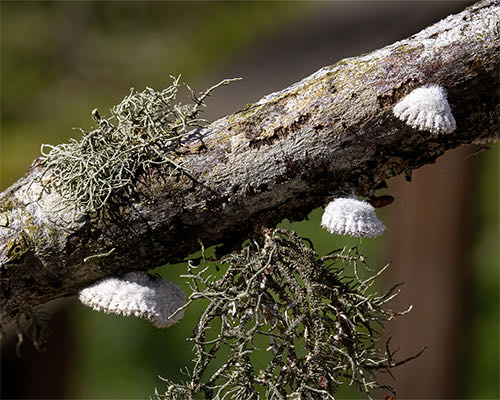
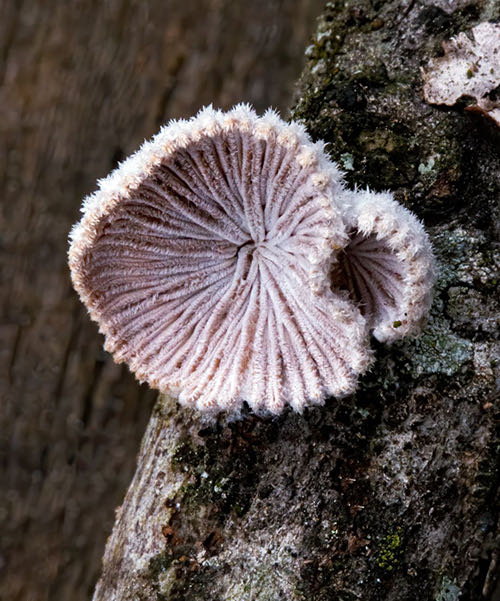
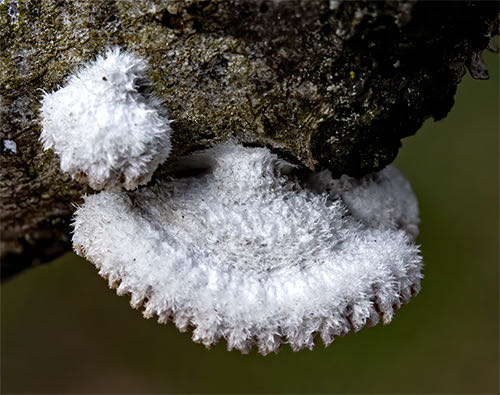
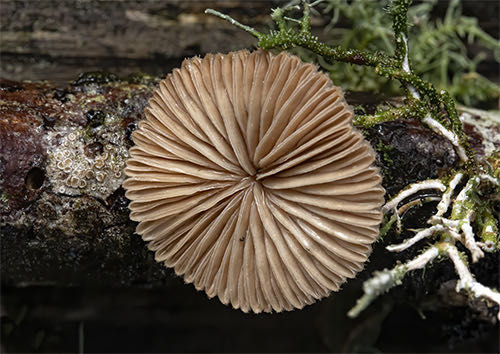
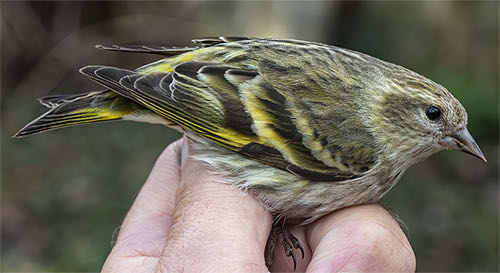

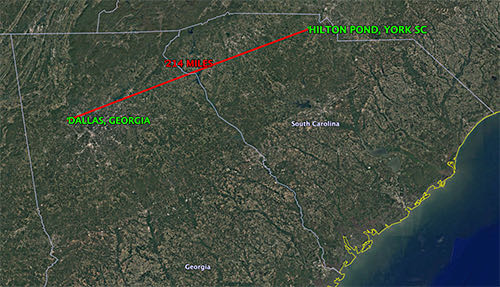
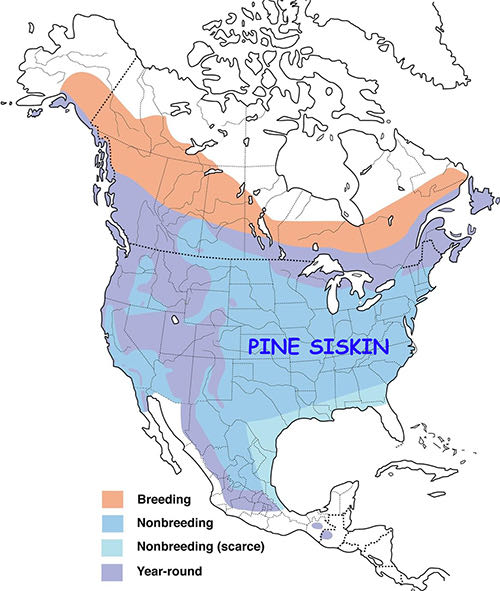
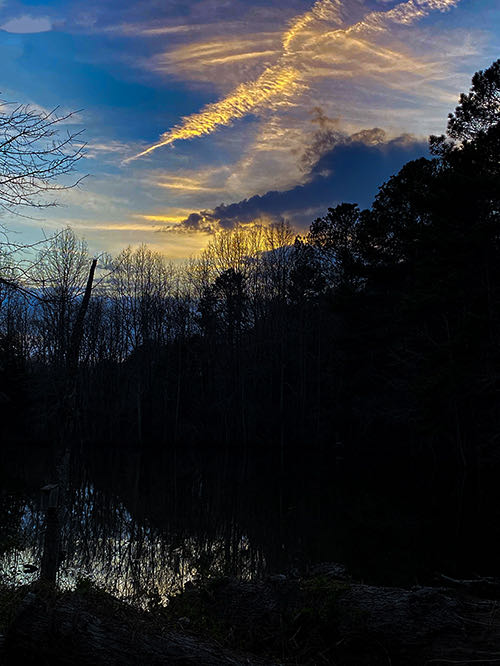










 Oct 15 to Mar 15:
Oct 15 to Mar 15: Please report your spring, summer &
Please report your spring, summer &